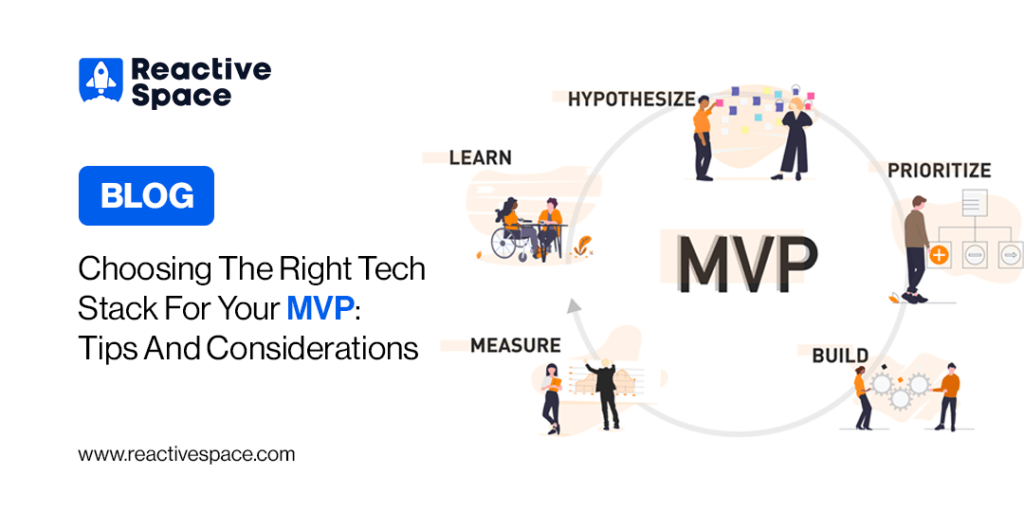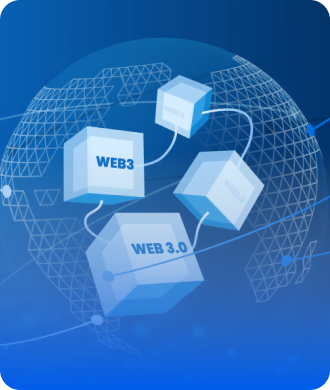
In the fast-paced world of technology, the concept of the Minimum Viable Product (MVP) has become a driving force behind innovation and product development. Coined and popularized by visionaries like Frank Robinson, Steve Blank, and Eric Ries, MVPs have revolutionized how startups and established businesses create and launch new products.
While much has been said about the MVP itself, one crucial aspect often overlooked is the choice of technology stack. In this article, we will delve into the tips and considerations for selecting the right tech stack for your MVP, emphasizing its vital role in the success of your project.
What is a Tech Stack for MVP?
Before we dive into the tips and considerations for choosing the right technology, let’s clarify what a tech stack for an MVP is.
A tech stack is essentially a set of programming languages, frameworks, and tools that developers use to build your product. It’s the foundation upon which your MVP will be constructed.
Choosing the right components for your tech stack is a critical decision that can significantly impact the development process and the quality of your end product.
Defining Your Requirements
The first step in selecting the right tech stack for your MVP development is defining your requirements. You need to have a clear understanding of the features and functionalities you want your MVP to have. By outlining your specific needs, you can identify the technology stack that best suits your project. Consider factors such as scalability, performance, security, cost, and development time. For example, if your MVP involves handling sensitive user data, security should be a top priority, and you may need to opt for technologies with robust security features.
Conducting Research
The tech landscape is vast and ever-evolving. Research is your ally in navigating this complex terrain. Start by exploring the various technologies and frameworks available that can help you build your MVP. Understand their strengths, weaknesses, and compatibility with your business goals. You can gather information from experts in the industry, attend meetups, and conferences, and read blogs and forums to gain insights into the available options.
Moreover, always consider the long-term viability of the technologies you research. Technologies come and go, and you don’t want to find yourself in a situation where your chosen stack becomes obsolete shortly after your MVP launch. Staying informed about emerging trends and the staying power of technologies is crucial.
Evaluating the Technology Stack
Once you have a list of potential technologies, the next step is to evaluate each one based on your requirements. Take into account elements such as usability, cost, scalability, performance, security, and community support. Consider the unique requirements of your project. If your MVP requires real-time capabilities, you might need a different stack than a content-based MVP. Assess the trade-offs and choose a tech stack that aligns with your MVP’s unique demands.
Team Expertise
Your team plays a pivotal role in the technology selection process. Evaluate your team’s expertise and experience with the technology stack you are considering. If your team is already well-versed in a particular technology, it may be more efficient and cost-effective to develop your MVP using that technology. Team familiarity can lead to quicker development and more reliable results.
However, don’t let team expertise limit your options. If there’s a compelling reason to choose a different tech stack, such as superior performance or scalability, investing in training and skill development for your team can be a wise decision. Balancing your team’s expertise with the technical requirements of your project is essential.
Testing the Technology
Before committing to a tech stack, consider creating a proof of concept or a prototype. This allows you to test the technology and see if it meets your requirements. It’s an excellent way to identify any potential issues or limitations early on, mitigating the risk of encountering roadblocks during full-scale development. By testing the technology in a real-world context, you can gain valuable insights into its suitability for your MVP.
Long-Term Impact
While the MVP’s primary objective is to launch a minimal version of your product quickly, it’s essential to consider the long-term impact of the technology you choose. Will it be easy to maintain, scale, and upgrade in the future? As your business grows, your product will evolve, and you’ll need to adapt to changing market dynamics. Ensure that your chosen tech stack is capable of supporting new features and functionalities as your business expands.
In summary, selecting the right tech stack for your MVP is a decision that should not be taken lightly. It requires a careful and comprehensive assessment of your project’s needs, extensive research, and consideration of the expertise of your team. Testing the technology and assessing its long-term viability is equally crucial. By following these tips and considerations, you can significantly enhance the chances of your MVP’s success and, ultimately, the success of your product in the market. Remember, the right tech stack is the foundation upon which your MVP will be built, so choose wisely and contact us now for your MVP Development.



